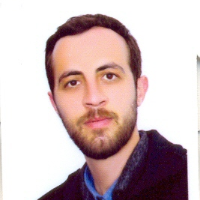Optimization of callus induction and micropropagation of four varieties of grape (Vitis vinifera L.)
Author(s):
Abstract:
Background And Objectives
Grape has high nutritional value and it is an economically important horticultural plant in the world. Iran has seventh producer grape rank in the world. Today tissue culture is one of technique which can be used in grape propagation and breeding.Material and
Method
In order to optimization of callus induction and micropropagation of grape in vitro condition, this investigation was conducted in two separate experiments. In the first experiment the effects of two explants including middle meristem and leaf segments and two plant regulators inducing Benzyl amino purine (BAP) and Naphthalene acetic acid (NAA) at five levels (0, 0.5, 1, 1.5, 2mg/L) on callus induction of four grape varieties (Askari, Siyah, Gavi, Rish-baba) were investigated. Two months after explants cultured and treatments application, length, height, volume, fresh and dry weight of callus, and their relative humidity were measured. In the second experiment the effect of BAP at two levels (2 and 1.5mg/L) and NAA at four levels (2, 1.5, 1, 0.5) on shooting and rooting percentage of four above mentioned grape varieties were tested. Shooting percentage, leaf number, shoot fresh weight and shoot length in shooting experiment, and rooting percentage in the rooting experiment were recorded. Both experiments were conducted using factorial experiment in a completely randomized design with three replications. Data were subjected to analysis of variance and the best treatments were introduced based on treatment means comparison.Results
Results of analysis of variances showed that plant growth regulators and their interactions were significant for all measured traits in the both experiments. The best treatment for callus induction and callus characters was 1.5 mg/L BAP and 2 mg/L NAA in middle meristem of Rish-baba cultivar. Results of second experiment showed that 2 mg/L BAP and 2 mg/L NAA were the best plant growth regulator combination for shooting of Askari and Gavi cultivars. This treatment was resulted 100 and 67 shooting percentage in Askari and Gavi cultivars respectively. Whereas combination of 1.5 mg/L BAP and 0.5 mg/L NAA in Siyah cultivar with 33 shooting percentage and combination of 1.5 mg/L BAP and NAA in Rish-baba cultivar with 67 shooting percentage had the best responses for shooting experiment. The all treatments showed very good responses to root generation because there were no significant differences between control and other plant growth regulators for rooting percentage and they produced 100% root tissue organ.Conclusion
In general, based on this results callus induction and regeneration conditions were optimized for four grape cultivars which can be used in grape production. Keywords:
Language:
Persian
Published:
Journal of Plant Production, Volume:22 Issue: 4, 2016
Page:
35
magiran.com/p1515250
دانلود و مطالعه متن این مقاله با یکی از روشهای زیر امکان پذیر است:
اشتراک شخصی
با عضویت و پرداخت آنلاین حق اشتراک یکساله به مبلغ 1,390,000ريال میتوانید 70 عنوان مطلب دانلود کنید!
اشتراک سازمانی
به کتابخانه دانشگاه یا محل کار خود پیشنهاد کنید تا اشتراک سازمانی این پایگاه را برای دسترسی نامحدود همه کاربران به متن مطالب تهیه نمایند!
توجه!
- حق عضویت دریافتی صرف حمایت از نشریات عضو و نگهداری، تکمیل و توسعه مگیران میشود.
- پرداخت حق اشتراک و دانلود مقالات اجازه بازنشر آن در سایر رسانههای چاپی و دیجیتال را به کاربر نمیدهد.
In order to view content subscription is required
Personal subscription
Subscribe magiran.com for 70 € euros via PayPal and download 70 articles during a year.
Organization subscription
Please contact us to subscribe your university or library for unlimited access!


